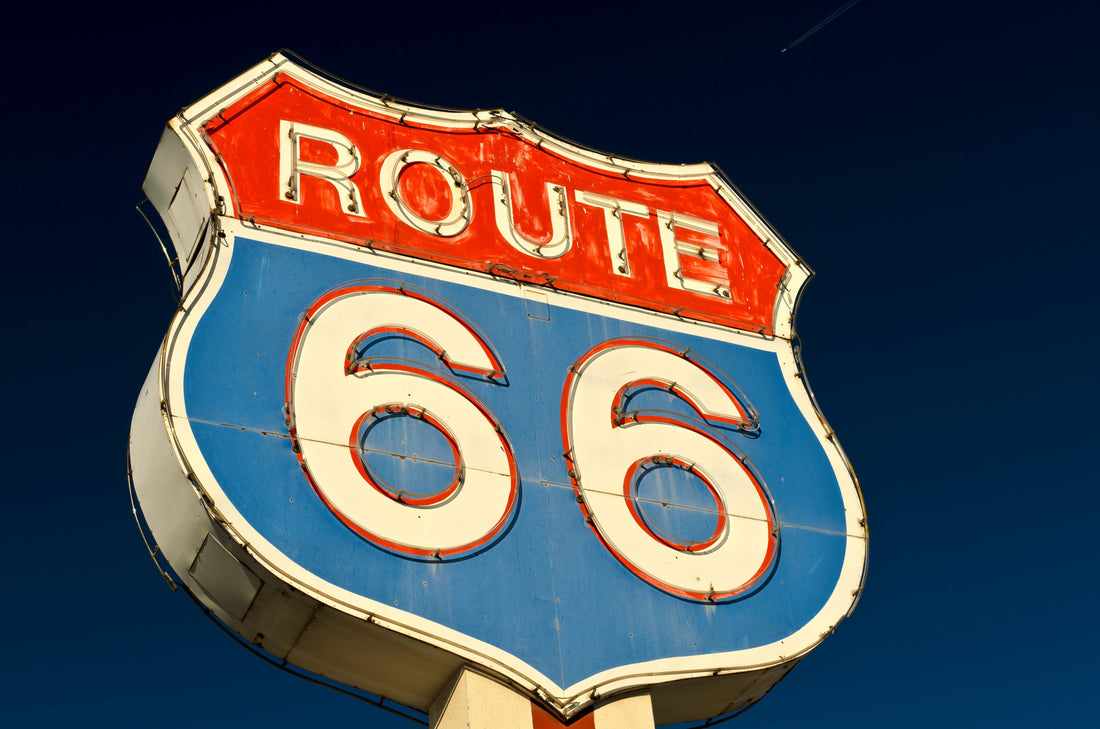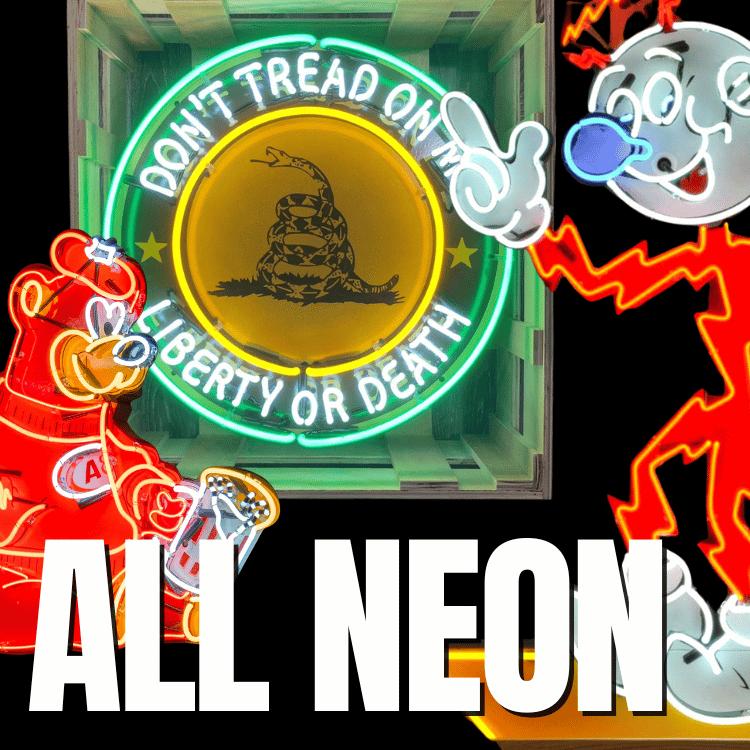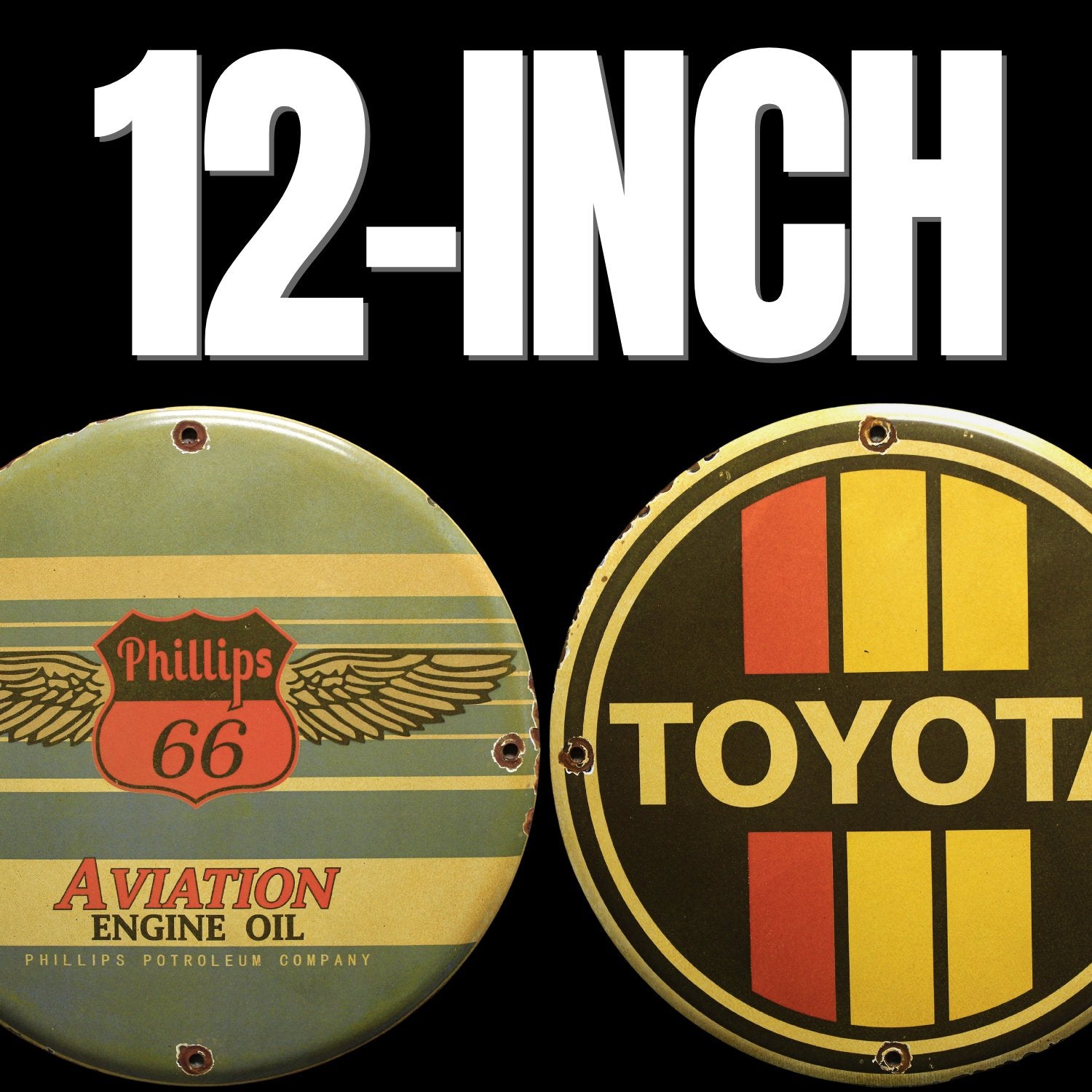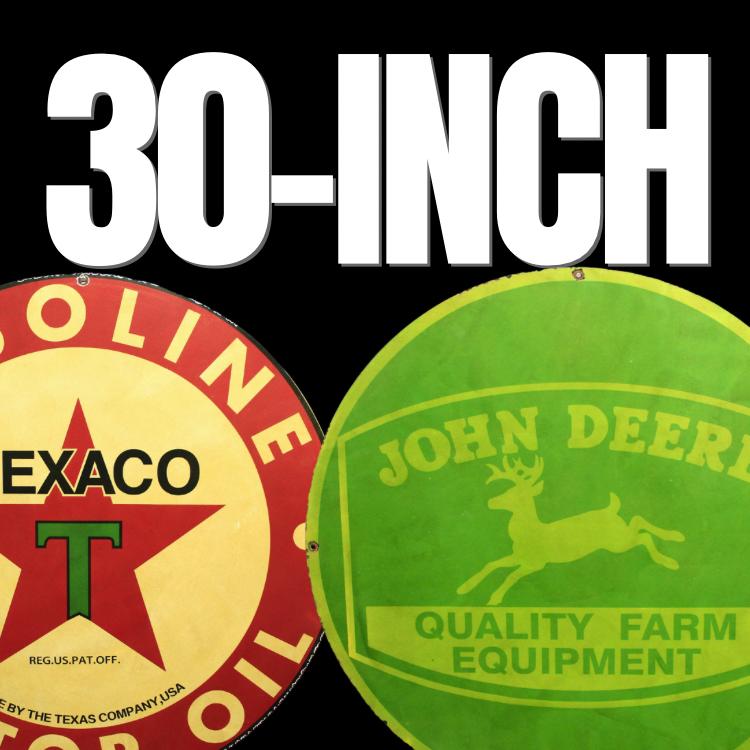
Route 66: The Mother Road of Americana
Few roads capture the American spirit like Route 66 shield. Opened in 1926, this stretch of highway ran over 2,400 miles from Chicago to Santa Monica. For nearly half a century, it was more than just a road—it was a symbol of freedom, opportunity, and the romance of the open highway.
The Golden Age of Travel
By the 1940s and 1950s, Route 66 had become the main artery for Americans heading west. Families piled into Chevrolets and Fords, stopping at roadside diners, motels, and service stations. Neon signs lit up the night sky, guiding travelers to a warm meal or a clean bed. Brands like Sinclair, Texaco, and Esso became trusted companions along the journey.
Route 66 wasn’t just a way to get somewhere—it was an adventure in itself.
Roadside Icons
As America’s love for the automobile grew, so did the businesses along Route 66. From quirky roadside attractions like giant fiberglass statues to the glowing neon of gas stations and cafés, every stop told a story. These signs and storefronts weren’t just advertisements—they were beacons for weary travelers, promising reliability, refreshment, or just a taste of small-town hospitality.
Today, collectors chase down those same porcelain and neon signs, preserving the authentic look and feel of that golden age of travel.
Decline and Revival
The completion of the Interstate Highway System in the 1950s began the slow decline of Route 66. By 1985, the road was officially decommissioned. Yet, the nostalgia never faded. Historic preservation groups, travelers, and collectors have kept the spirit alive. Sections of Route 66 have been restored, and its imagery—classic cars, neon signs, and roadside Americana—remains as powerful as ever.
Why It Matters Today
Route 66 is more than a highway—it’s a reminder of when America was in love with the road. It represents craftsmanship, optimism, and the culture that grew around travel. For collectors and enthusiasts, signs from this era aren’t just decorations—they’re pieces of history that connect us back to the journey.









